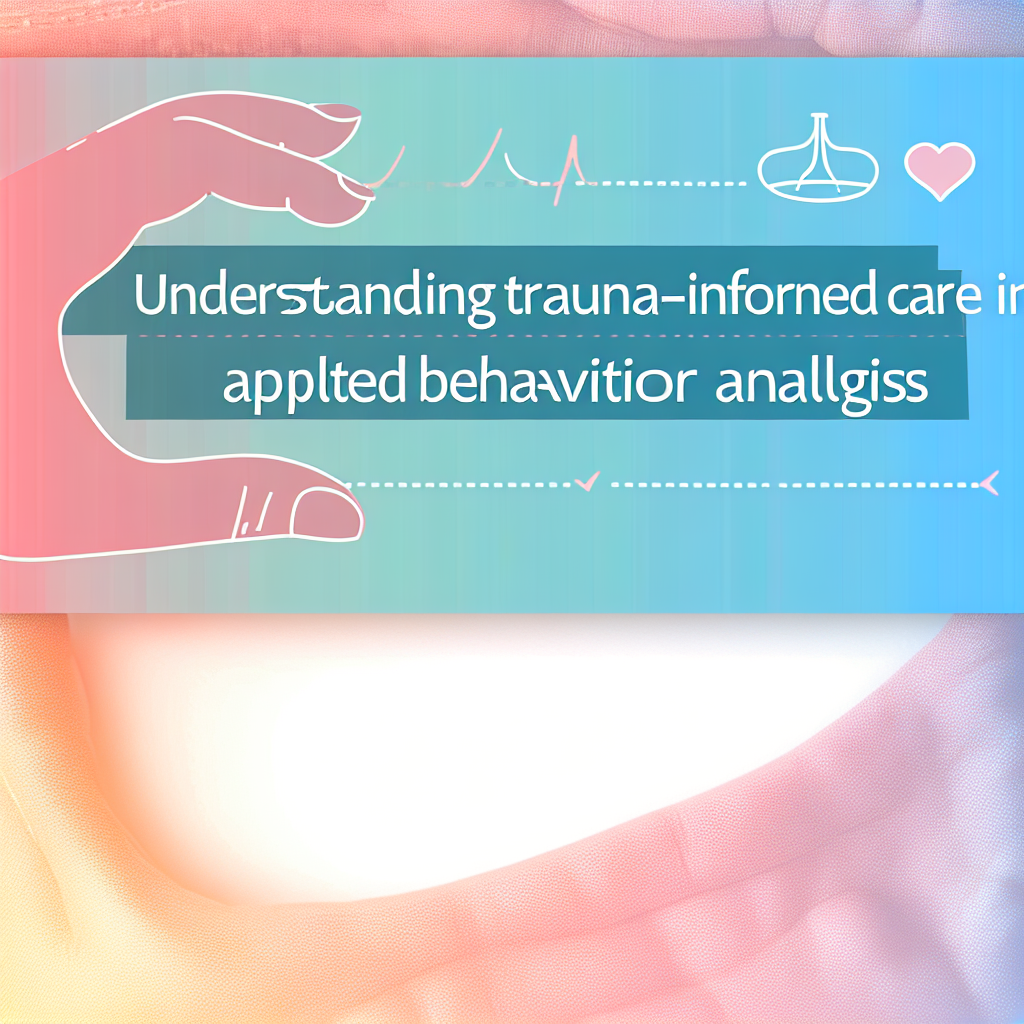Understanding Trauma-Informed Care in Applied Behavior Analysis
Introduction
Applied Behavior Analysis (ABA) is widely used to support individuals with autism and other developmental disabilities. However, traditional behavior analytic practices have sometimes overlooked the impact of trauma on individuals receiving services. The concept of trauma-informed care (TIC) is gaining recognition as an essential approach within ABA.
A recent special issue of Behavior Analysis in Practice, authored by Jennifer L. Austin, Adithyan Rajaraman, and Lauren Beaulieu (2024), sheds light on the intersection of TIC and ABA. This blog explores their work and highlights key takeaways for behavior analysts looking to integrate TIC principles into their practice.
What is Trauma-Informed Care (TIC)?
TIC is an approach that recognizes the impact of trauma on individuals and adapts interventions to promote emotional safety, trust, and empowerment. It is based on six core principles:
- Safety – Ensuring a physically and emotionally secure environment.
- Trustworthiness and Transparency – Building genuine, transparent relationships.
- Peer Support – Encouraging collaboration among individuals with shared experiences.
- Collaboration and Mutuality – Valuing the expertise of clients and caregivers.
- Empowerment and Choice – Providing opportunities for individuals to make decisions.
- Cultural, Historical, and Gender Considerations – Recognizing the impact of identity and systemic oppression.
By adopting these principles, ABA practitioners can create interventions that decrease stress, minimize re-traumatization, and enhance therapeutic relationships.
The Impact of Trauma on Individuals Receiving ABA Services
Many individuals receiving ABA services have experienced trauma. Trauma can take many forms, including neglect, abuse, medical trauma, or systemic discrimination. Research on Adverse Childhood Experiences (ACEs) shows that early trauma can have long-term effects on behavior, emotional regulation, and physical health.
Several populations are particularly vulnerable to trauma, including:
- Individuals with autism and developmental disabilities
- Racial and ethnic minority groups
- LGBTQ+ individuals
- Children in foster care
- People experiencing homelessness
- Incarcerated individuals
- Victims of domestic violence or abuse
- Refugees and displaced persons
Understanding these vulnerabilities allows behavior analysts to create interventions that promote safety and healing while still effectively teaching new skills.
How ABA Can Align with Trauma-Informed Principles
It is possible to combine ABA strategies with trauma-informed approaches while maintaining treatment effectiveness. Some trauma-informed ABA practices include:
- Building strong therapeutic relationships – Ensuring that rapport is established before implementing interventions.
- Using reinforcement rather than punishment – Focusing on positive reinforcement rather than aversive methods.
- Providing choice within interventions – Allowing individuals to have control over certain aspects of their learning.
- Implementing assent-based practices – Ensuring that clients feel comfortable and can opt out of tasks if needed.
- Minimizing exposure to potential triggers – Recognizing situations that may be distressing and adjusting accordingly.
- Encouraging interdisciplinary collaboration – Working alongside other professionals to address a client’s needs holistically.
- Training staff in TIC principles – Providing education for behavior analysts to recognize and respond to trauma appropriately.
These strategies help create a balance between effective intervention and respect for an individual's mental and emotional well-being.
Dispelling Common Misconceptions About TIC in ABA
As TIC gains traction in behavior analysis, some misconceptions persist. Addressing these misunderstandings can help behavior analysts integrate TIC into their practice more effectively.
1. TIC Requires a Focus on Past Trauma
Some believe that TIC means shifting the focus of ABA to historical trauma rather than present behavior. However, TIC does not require discussing or analyzing past trauma to be effective. Instead, it acknowledges that past experiences may shape current behaviors and emotions, guiding practitioners in designing trauma-sensitive interventions.
2. TIC Means Eliminating All Challenging Situations
Another misconception is that TIC prevents practitioners from working through difficult situations or placing demands on the learner. In reality, TIC encourages the use of strategies that reduce unnecessary stress while still teaching essential life skills. The goal is not to avoid all challenges but to present them in ways that are supportive rather than coercive.
3. TIC is Only for Individuals with a Documented Trauma History
Even if a client does not have a known history of trauma, implementing trauma-informed practices can still be beneficial. Many individuals in ABA settings may have experienced stressors that affect their ability to learn, and a trauma-sensitive approach promotes well-being for all learners.
Call to Action
Trauma-informed care is not a replacement for ABA but rather a critical enhancement that promotes ethical, effective, and compassionate treatment. As behavior analysts, it is our responsibility to ensure that interventions account for the emotional and psychological needs of individuals receiving services.
For a deeper dive into how TIC and ABA intersect, refer to Austin, Rajaraman, and Beaulieu’s (2024) article in Behavior Analysis in Practice: https://doi.org/10.1007/s40617-024-00988-0.



